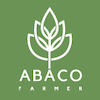The Covid-19 health emergency has consolidated consumer attention to issues such as health protection and sustainability, thus promoting the adoption of new technologies. Vegetable production in a controlled environment and in greenhouses (protected cultivation) represents a virtuous system that responds to market needs. This type of cultivation makes it possible to optimize the production and quality of vegetables, including fourth-range products such as, for example, slicing lettuce (Lactuca sativa L. var. acephala), wild arugula (Diplotaxis tenuifolia L.), spinach (Spinacia oleracea L.), lamb’s lettuce (Valerianella olitoria L.), chicory (Cichorium intybus L.) and other minor species.
Vegetable production in a protected environment ensures better management of resources and cultivation technique by controlling microclimatic conditions and inputs. The adoption of these cultivation systems and facilities allow the farm to produce in an environmentally and consumer friendly way (without chemical residues), avoiding the problems related to the seasonality of the open field of specific crops.
In order to meet market demands and thus the demand for fresh, sanitized, packaged and ready-to-eat fruit and vegetables, recent technological innovations in hardware and software make it possible to optimize yields, irrigation efficiency, water and energy consumption, and prevent diseases due to pathogens while respecting soil biodiversity.
